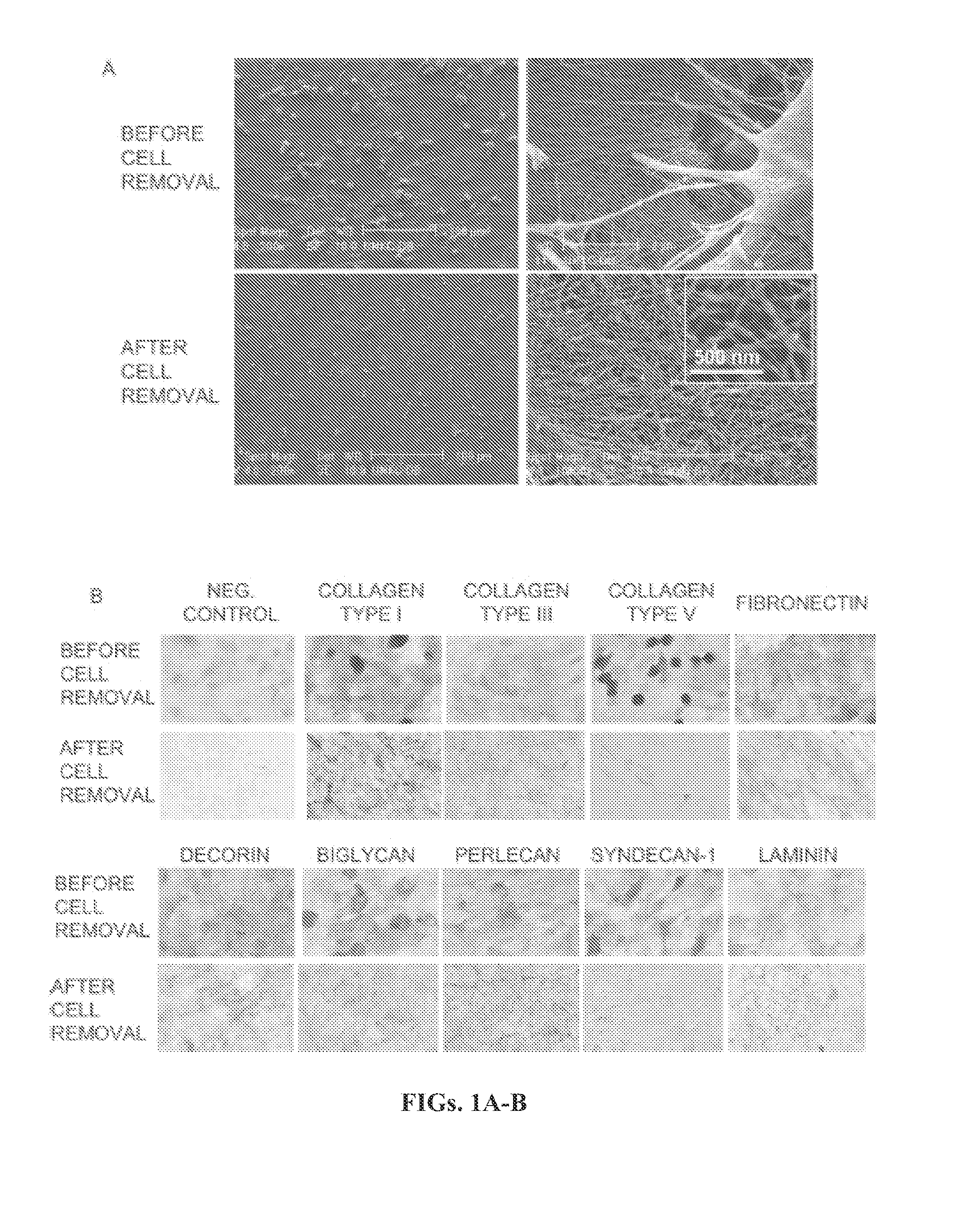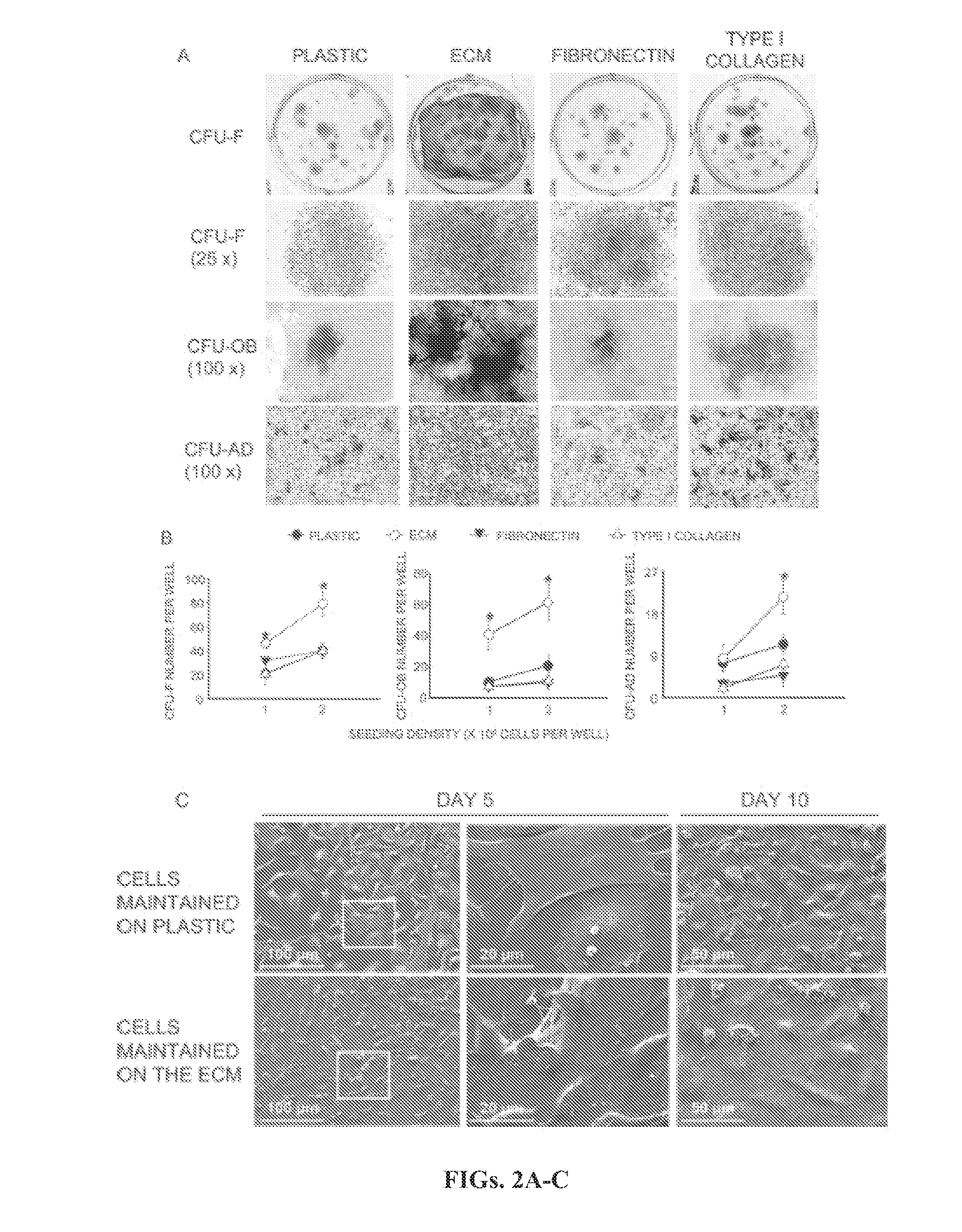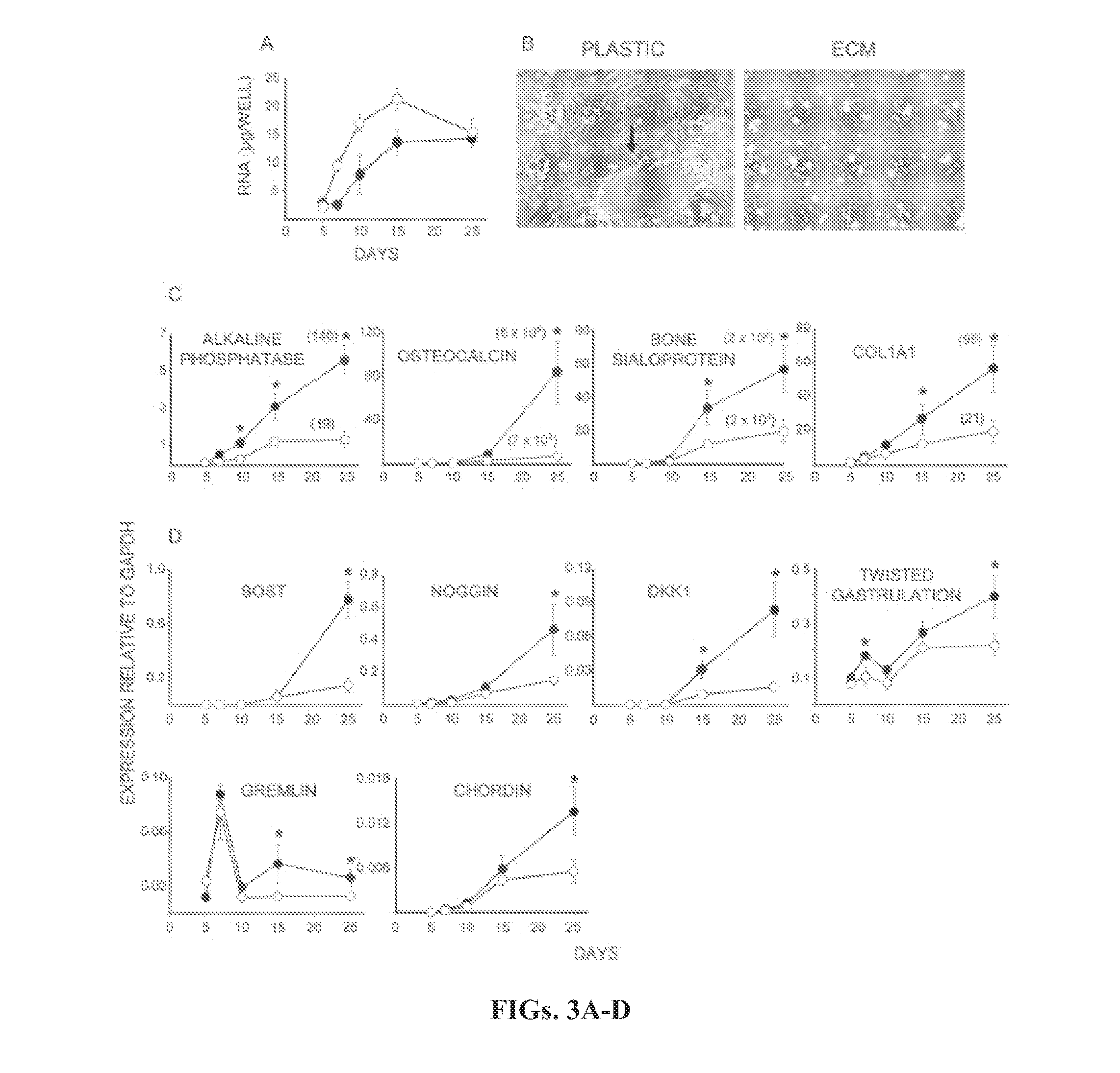Tissue-specific differentiation matrices and uses thereof
a differentiation matrix and tissue technology, applied in the field of biomedicine, can solve the problems of critical unsolved problems affecting the therapeutic potential of mesenchymal stem cells, uncertainty of the reliability and predictability of these cells in clinical applications, and relatively little knowledge about the cellular and molecular mechanisms underlying the control of msc proliferation, differentiation, survival,
- Summary
- Abstract
- Description
- Claims
- Application Information
AI Technical Summary
Benefits of technology
Problems solved by technology
Method used
Image
Examples
example 1
Preparation and Characterization of the Tissue-Specific Preservation Matrix
Materials and Methods
[0131]Animals.
[0132]Swiss Webster female mice, 6-8 wk old, were obtained from Harlan (Indianapolis, Ind., USA). The University of Arkansas for Medical Sciences Division of Laboratory Animal Medicine approved the animal use protocol.
[0133]Preparation of Cell-Free ECM from Cultured Bone Marrow Cells.
[0134]Femoral marrow cells were obtained as previously described (Di gregorio et al., 2001) and cultured in 6-well plates (Corning, Corning, N.Y., USA) at 3×106 cells / 10-cm2 well in 4 ml of a standard culture medium made up of a-MEM (Life Technologies, Grand Island, N.Y., USA) supplemented with glutamine (2 mM), penicillin (100 U / ml), streptomycin (100 p.g / ml; Sigma Chemical Co., St Louis, Mo., USA), and 15% preselected FBS (Atlanta Biologicals, Lawrenceville, Ga., USA). After 7 days of culture, nonadherent cells were removed by rinsing. The adherent stromal cell layer was dispersed with PBS con...
example 2
Preparation and Characterization of the Preservation Matrix
Materials and Methods
[0172]Animals.
[0173]Swiss Webster female mice, 6-8 weeks old, were obtained from Harlan (Indianapolis, Ind.). The University of Arkansas for Medical Sciences Division of Laboratory Animal Medicine approved the animal use protocol.
[0174]Scanning Electron Microscopy.
[0175]Samples were washed three times with PBS and fixed with 2% glutaraldehyde in 0.1M sodium cacodylate buffer (pH 7.2) for one hour and then transferred to 0.1 M cacodylate buffer solution. The specimens were dehydrated in ascending concentrations of ethanol (from 70% to 100%), embedded in peon resin (Poly / bed 812 Polysciences Int., Warrington, Pa.), and then coated with gold and palladium. After dehydration the coverslips were attached to a stub and sputtered with gold-palladium. The gold-palladium-coated cultures were examined using an FRI / Philips XL30 Field emission environmental scanning electron microscope (Hillsboro, Oreg.).
[0176]Immun...
example 3
Preparation and Characterization of the Preservation Matrix
Materials and Methods
[0223]Cells.
[0224]Freshly isolated human bone marrow mononuclear cells obtained from 20-30 year old donors were purchased from ALLCELLS (Emeryville, Calif., USA), and grown on tissue culture plastic at an initial seeding of 3×105 cells / cm2 until 70% confluence (2-3 weeks) in the expansion medium [a-MEM (Life Technologies, Grand Island, N.Y., USA), glutamine (2 mM), penicillin (100 U / ml), streptomycin (100 pg / ml, Biofluids, Rockville, Md., USA), and 15% pre-selected fetal bovine serum (FBS, Becton Dickinson, Franklin Lakes, N.J., USA)]. After washing with phosphate-buffered saline (PBS) to remove non-adherent cells, the adherent cells, considered as passage 1, were detached by trypsin treatment (0.02% for 2 minutes at 37° C.), and collected for storage or directly used for the establishment of preservation ECM or the investigation of the behavior of MSCs maintained on the various substrata.
[0225]Preparati...
PUM
 Login to View More
Login to View More Abstract
Description
Claims
Application Information
 Login to View More
Login to View More - R&D
- Intellectual Property
- Life Sciences
- Materials
- Tech Scout
- Unparalleled Data Quality
- Higher Quality Content
- 60% Fewer Hallucinations
Browse by: Latest US Patents, China's latest patents, Technical Efficacy Thesaurus, Application Domain, Technology Topic, Popular Technical Reports.
© 2025 PatSnap. All rights reserved.Legal|Privacy policy|Modern Slavery Act Transparency Statement|Sitemap|About US| Contact US: help@patsnap.com



